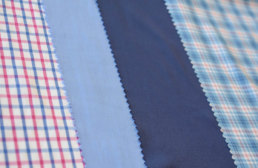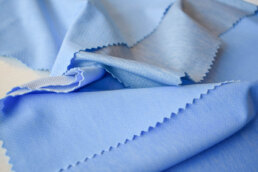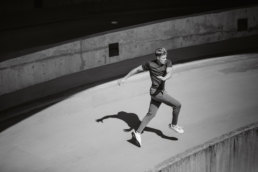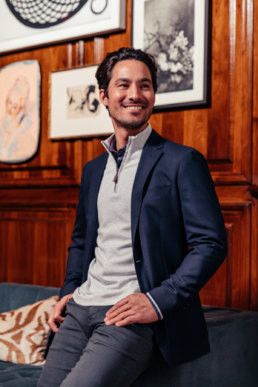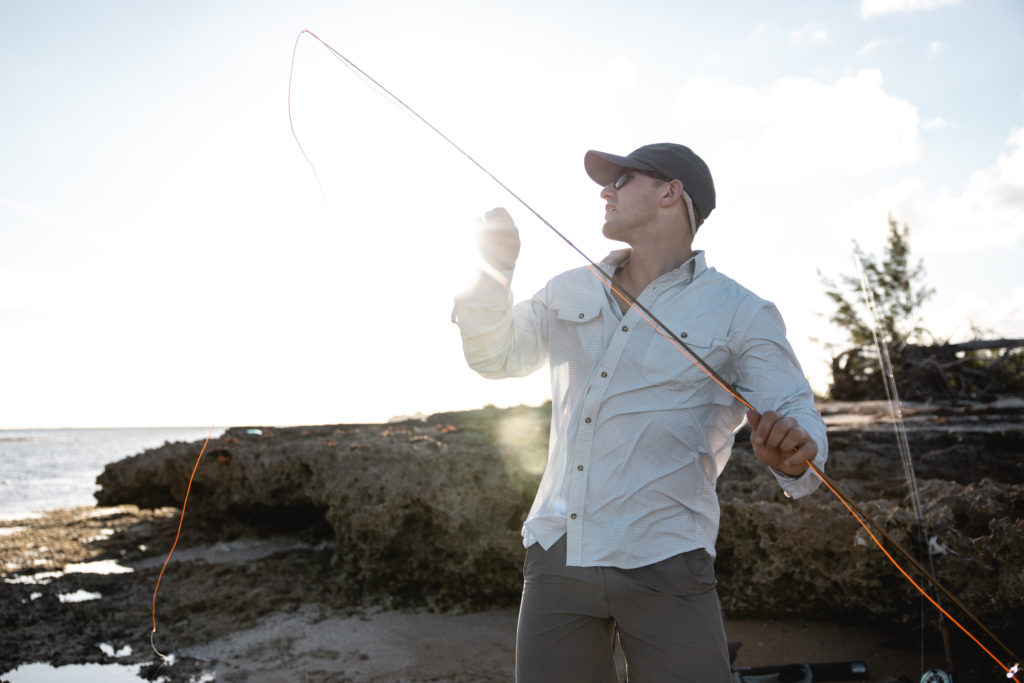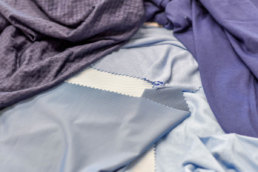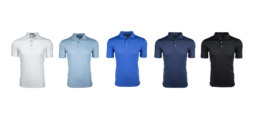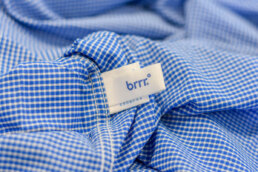These Bermuda Shorts Are Effortlessly Cool
 Laidback Bermuda men’s apparel brand Coral Coast Clothing is bringing brrr° cooling fabric to summer wardrobes for an effortlessly cool look.
Laidback Bermuda men’s apparel brand Coral Coast Clothing is bringing brrr° cooling fabric to summer wardrobes for an effortlessly cool look.
Coral Coast’s signature Bermuda Performance Shorts feature brrr°’s natural cooling minerals, active wicking, and rapid drying that work together to create a Triple Chill Effect that provides all-day comfort from sunup to sundown.
The shorts also offer UV sun protection and breathable mesh pockets for active lifestyles, and they are cut in Coral Coast’s classic 8 ¾ inseam for a modern fit.
The shorts have custom laser-engraved buttons and an embroidered angelfish above the back buttoned pocket that give a nod to Bermuda’s easygoing island lifestyle.
Available in classic colors like navy, gray mist, and roof white, Coral Coast also introduced a vibrant coral color this year that was inspired by Pantone’s Color of the Year for 2019.
brrr° and MacBick Partner to Create Cooling Face Masks

As a woman-owned business, brrr° is excited to partner with another woman-owned and operated business to bring cooling face masks to their employees and customers.
brrr° CEO Mary-Cathryn Kolb worked with Bevin Carter, the CEO of Atlanta- based laboratory design/build firm MacBick, to develop masks made with cooling fabric that will help protect the health and safety of their workers and customers.
The brrr° masks will keep people cooler while they adjust to a new work environment and get back into the swing of things on the job.
The goal is to keep people cool and comfortable as they go about their daily business. Studies show that it’s harder to concentrate and focus on the task at hand when you are hot and uncomfortable, so improving the fabric and design of these masks will enhance productivity and creativity.
The masks are made of 54% BCI cotton, 41% brrrº nylon, and 5% spandex for stretch and better fit. Like all brrr° products, the masks are cool to the touch, quick-drying, and washable. They can be easily customized for different colors, patterns, logos, and other branding.
“We’re so happy that brrr° can provide cool comfort during this time as people start to return to work and adjust to new ways of doing business,” Kolb said. “We are excited to partner with another woman-owned company that is also passionate about innovation and collaboration and putting the needs of their employees and customers first.”
MacBick’s Carter says that as the COVID-19 pandemic created challenges in our everyday lives, it also created opportunities to innovate and find new ways to help slow the spread of coronavirus and reduce the risk of overwhelming the healthcare system.
Carter was looking for a comfortable face mask made with a unique fabric that was designed differently than others on the market, and she was thrilled to find a better solution for her employees and customers.
Working with brrr°, MacBick developed a face mask with breathable cloth that is cool to the touch and wicks away moisture. The masks help prevent the spread of germs and are more comfortable to wear during the workday and while running essential errands.
brrr° creates yarns and fabrics with patented cooling technology that uses natural cooling minerals, active wicking, and rapid drying to create a Triple Chill Effect that instantly and continuously draws heat and moisture away from the skin.
“As the world faces its biggest pandemic within the century, we are prepared to work tirelessly to continue developing innovative flexible lab solutions that drive productivity and collaboration. Together, we will fight this pandemic by sharing best practices, accelerating research for treatments and vaccines beyond commercial interests,” Carter said.
Find out how to get brrr° MacBick masks by reaching out to us at masks@macbick.com.
Poplin Style Shirts from Kit and Ace are brrrºeezy and Cool
Modern clothing should be able to go anywhere, and Canadian apparel brand Kit and Ace is all about all-day comfort for urban commuters.
all about all-day comfort for urban commuters.
We love Kit and Ace’s new lines of shirts made with brrr° cooling poplin-style fabric and cooling lightweight stretch fabric that are perfect for work, commuting, weekend play, and everywhere in between.
Kit and Ace’s technologically advanced shirts feature brrr° natural cooling minerals, active wicking, and rapid drying, which work together to create a Triple Chill Effect that draws heat and moisture away from the skin.
The cooling powers of brrr° are independently lab tested and proven to outperform other products on the market.
We enjoy working with another company that is just as passionate about advanced performance technology and functionality as we are.
Kit and Ace is committed to making clothing for commuting workers that is technologically advanced, comfortable, stylish, and built to last.
Sourcing Journal Features Mary-Cathryn Kolb
Thank you to Sourcing Journal reporter Sarah Jones for featuring brrr° Founder & CEO Mary-Cathryn Kolb in their Material Innovation 2020 report, which explores emerging trends in the textile industry!
 Jones asked several executives from companies including The North Face, DuPont, Schoeller, Lenzing Group and brrr° to share their thoughts on what fabric innovation will look like in 2021 — especially in light of changing consumer needs and wants since the COVID-19 pandemic.
Jones asked several executives from companies including The North Face, DuPont, Schoeller, Lenzing Group and brrr° to share their thoughts on what fabric innovation will look like in 2021 — especially in light of changing consumer needs and wants since the COVID-19 pandemic.
The responses were far-ranging and diverse, which was very refreshing and encouraging to see.
Textile executives touched on things as varied as the role e-textiles could play in capturing vital statistics like pulse rate and oxygen levels; advances in sustainability and traceability throughout the supply chain; and demonstrating the benefits of advanced fabrics through testing and scientific study.
Kolb said one major development she expects to see in 2021 is more demand from retailers and consumers for advanced products that do something to help people feel more comfortable. She also expects to find greater efficiencies in production and supply chains to give retailers more flexibility on order sizes as they test new products.
“Retailers are increasingly looking for technological advances to differentiate their products and entice customers to spend, especially in the post-COVID environment,” Kolb said.
“Fabric performance is at the top of that list, and consumers are willing to pay a premium for it. We think 2021 is going to be a year of major advances in cooling technology. Finding more efficient ways to produce the yarn and fabric. Being able to make smaller and more frequent orders in a more nimble way.”
Subscribers to Sourcing Journal can download the full report here.
Stay Fit and Cool with the Greyson Guide Workout Shirt
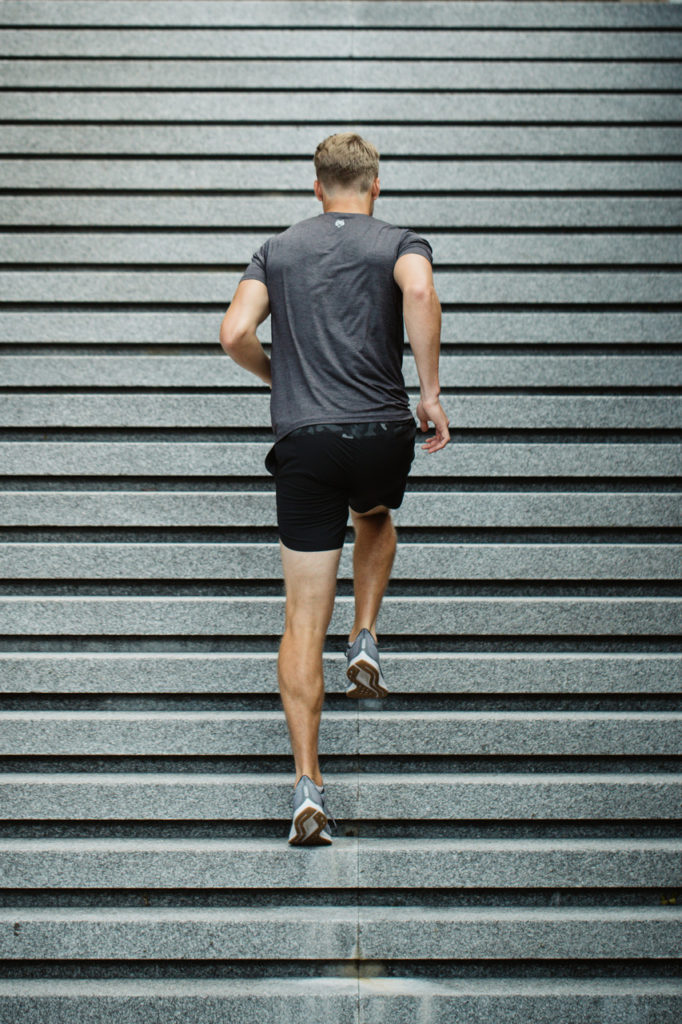 Staying fit and taking care of your health and wellbeing are especially important right now, and we’re big fans of Guide Sport Tee by Greyson.
Staying fit and taking care of your health and wellbeing are especially important right now, and we’re big fans of Guide Sport Tee by Greyson.
The Guide workout shirt is the newest addition to Greyson’s collection of pieces for active lifestyles. It combines the high performance of a workout shirt with the casual styling of an everyday wardrobe staple. We like the way it looks equally great while exercising, or paired with jeans for a casual vibe.
Made with a blend of 94% brrr° cooling nylon and 6% spandex, the Guide Sport Tee features a powerful mix of natural cooling minerals, active wicking and rapid drying technologies that work together to draw heat and moisture away from your skin.
That means it will help you feel better and have greater endurance while you’re exercising so you can perform your best.
With ultimate stretch and freedom of movement, the Guide Sport Tee offers superior comfort that lasts all day. It also has 50+ UPF protection to protect your skin from the sun’s harmful rays during outdoor activities.
Cool Comfort with Mizzen+Main Blazers
 Men can feel fresh and confident in even the hottest summer months with performance fabric blazers by Mizzen+Main.
Men can feel fresh and confident in even the hottest summer months with performance fabric blazers by Mizzen+Main.
The sport coats feature linings made with brrr° cooling technology, which combines natural cooling minerals, active wicking, and rapid drying. brrr° instantly and continuously draws heat and moisture away from the skin for maximum comfort and superior breathability.
The Mizzen+Main blazers also have a two-way stretch with a touch of spandex to support an active lifestyle.
With a stylish notch lapel, two-button single breast, patch pockets, and double rear vents, the blazer has a modern trim fit that transitions easily from daytime to evening.
Comfortably Cool at Work & Play with Genteal Apparel
We adore the new line of performance button-downs and vented shirts by Mississippi-based casual lifestyle brand Genteal Apparel.
The new line of performance clothing features brrr° cooling technology, with natural cooling minerals, active wicking, and rapid drying.
brrr° fabric actively reduces skin temperature by drawing heat and moisture away from the skin, and it’s independently lab tested and proven to keep you cooler.
These Genteal shirts also have innovative stretch technology for ultimate comfort, and a built-in chamois cloth to clean and polish sunglasses.
With a variety of colors and styles in their performance casual dress shirts, Genteal offers an effortlessly cool look for both work and play.
Six effective ways to secure customer feedback feat. brrrº
Atlanta Business Chronicle Leadership Trust
A business performs best when leadership has insight into customers’ wants and experiences. Such insight can help guide service offerings, provide marketing copy and more. In theory, getting customer feedback is easier today than it ever has been — online surveys, review sites and multiple social media outlets offer tools for both businesses and consumers. However, persuading your customers to share their experiences can be challenging.
Below, six leaders from Atlanta Business Chronicle Leadership Trust share strategies about when and how businesses can approach their customers for feedback, as well as what they should do with the information they receive.
1. Have someone else solicit feedback.
Asking for candid feedback can be awkward, and a fear of offending or hurting feelings can make people reluctant to say what they really think. So have someone else do it. Ask a trusted person from your marketing or PR team, a consultant, an outside adviser, or even a board member to ask specific questions (for consistency), and make sure some of those questions are about what could be better. – Mary-Cathryn Kolb, brrrº
2. Show your commitment to customer care.
The entire customer journey experience — from a website visit to a phone call, email or in-person interaction — is paramount. Every touchpoint should be one that reinforces your business’s commitment to customer care. If this is done successfully, the customer will be more inclined to provide feedback without your needing to ask. – Don Dodds, M16 Marketing
3. Always respond to all feedback.
I’d recommend making it a clear goal to seriously respond to all feedback (positive and negative) your customers give you. This way, you will get an active feedback loop with your customers. – Mats-Ola Bydell, Odgers Berndtson
4. Ask what you can do to improve.
We ask our clients to rate their satisfaction level at the end of each project. We ask them not only what they felt went well with the project but also what we could have done better. – Michele Grant, Block + Tackle
5. Start by building a strong bond.
We kick off every client relationship with a half-day offsite that encourages team bonding. Everyone working on the project, both on the agency’s side and the client’s side, attends with the goals of getting to know each other better and setting a foundation where trust can begin to build. We find that a trusting partner is more likely to openly share feedback. – Jeff Hilimire, Dragon Army
6. Focus on encouraging referrals.
We always strive to perform the best we can, and we have an annual stewardship review with our clients to receive direct feedback. However, the best feedback we can receive is when a client refers us to someone new — it’s the best strategy for us to know if we are executing on our client service commitments and goals. – Neil Metzheiser, Lockton Companies, LLC
Look Polished on Video Conferences with the Greyson Omaha Polo
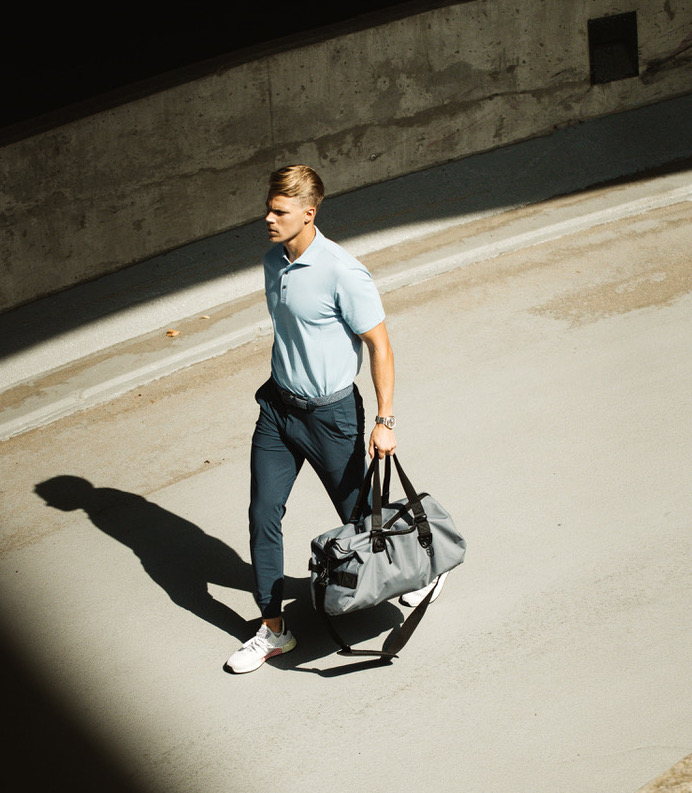 Many of us are spending more time than ever on video conferences with colleagues and customers as we work hard to stay connected and do business during the mandatory closures aimed at slowing the spread of coronavirus.
Many of us are spending more time than ever on video conferences with colleagues and customers as we work hard to stay connected and do business during the mandatory closures aimed at slowing the spread of coronavirus.
To look polished and put together for video meetings, we love the Omaha Polo by Greyson.
The Omaha Polo brings a modern silhouette to a traditional casual style. The three-button placket design and spread collar make it a great choice for work or play, and everything in between.
The Omaha Polo is made with brrr° cooling performance fabric, and features natural cooling minerals, active wicking and rapid drying technologies that work together to instantly and continuously draw heat and moisture away from your skin. That means ultimate comfort all day long, from videoconference calls to breaks for a quick around your neighborhood to stretch your legs.
With UPF 50+ protection and a touch of spandex, the Omaha Polo supports active lifestyles and allows for maximum movement and stretch no matter how you’re spending the day.
Sustainability and Value Article featuring brrrº
The textile industry turns to biomaterials and biomimetics for green alternatives.
by Glenna B. Musante
As the textile and outdoor gear communities look for ways to limit the use of petroleum products, apparel and gear brands, as well as ingredient manufacturers within the textile industry supply chain, are beginning to replace or augment plastics and polyester with biomaterials. Textile companies are also turning to biomimetic processes.
Jan Beringer, senior scientific expert with the Hohenstein Institute for Textile Innovation, said this growing trend in the textile industry is tied largely to sustainability. But that is not the only reason textile companies are turning to Mother Nature for materials and design inspiration. Some natural products and processes can enhance the performance value of a product.

Natural successes
Beringer, who was interviewed at the 2020 Winter Outdoor Retailer and Snow Show in Denver Colo., said companies across the textile sector are finding new ways to improve the degradation of synthetic textiles in the environment without sacrificing performance.
“The textile industry needs to make a greener product,” he said, while at the same time maintaining the performance characteristics consumers expect. “This has been a constant effort for the last one to five years.”
He named DuPont Sorona® as an example. DuPont describes Sorona in marketing materials as a textile “on the forefront of the shift from oil-based materials to bio-based ones.” Developed by the R&D labs at DuPont, Sorona is made, in part, with glucose. The manufacturing process involved begins with harvesting crops, then extracting glucose from those crops and adding microorganisms to the glucose to begin a fermentation process (similar to the production of alcohol). Fermentation replaces chemical synthesis, producing PDO (1,3-Propanediol). TPA (terephthalic acid) is added to the Bio-PDO, creating a molecular bond.
DuPont describes Sorona as a high-performance polymer with a variety of end-product applications. Sorona Revive Fabric, for example, can be used in applications with Spandex to add stretch in addition to recovery for apparel shape-retention. DuPont adds that 37 percent of the end polymer is made from annually renewable plant-based ingredients.
According to Beringer, a number of natural materials are being used by the textile industry to develop bio-based fabrics or fabric blends, including milk, corn starch, and algae (which uses CO2 from the atmosphere).
Enhanced performance
Formed in 2014, brrr° is a relatively new fabric technology that incorporates salts and natural minerals into the extrusion mix for a synthetic textile that has cooling properties. Mary Jane Credeur, speaking on behalf of brrr°, described this as a cooling technology integrated into a polyester or nylon blend. “The secret sauce,” she said, “is a master bend of salts and cooling minerals,” developed in 2014 by a team led by Mary-Cathryn Kolb, the former director of sales for SPANX®.
Basically, the salts and minerals are pulverized and then added to the polymer. The technology is a component of several high-end products including golf apparel from Greyson and women’s dresses from Southern Tide.
Breaking down degradation
Other companies are adding biomaterials to synthetics, such as polyester, to facilitate a process similar to biodegradation. That, however, is what Dr. Sonja Salmon, associate professor of textile engineering at NC State’s Wilson College of Textiles described as a “complicated space,” due to potential misunderstandings related to the various stages of a textile’s decomposition.
The first step, Salmon said, is deconstruction. This is where a textile product is taken apart. The next step is disintegration, which is where a textile is physically broken apart into smaller microscopic fragments. The last is degradation, which refers to a chemical conversion of a larger or more complex chemical structure into simpler chemical structures. A sub-group of degradation, she added, is biodegradation, where the remaining particles go through a chemical conversion into energy that can be consumed.
“When you eat something, you are biodegrading it,” she said, “and those layers are very important when we start talking about polyester or other acrylics.”
California state law, for example, has strict rules related to the use of the word “biodegradation” in connection with any polyester product. California law SB 567 prohibits any plastic product sold within the state to be labeled as “biodegradable,” “degradable,” or “decomposable,” or any form of those terms.
Sustainable synthetics
The makers of CiCLO® additive technology, a new fiber option in the textile industry supply chain, have taken that guideline to heart as they bring a new, more sustainable synthetic fiber technology to market. CiCLO chemistry is added to polymers during the extrusion process, which helps fabrics, such as polyester, break down in a way that’s similar to wool at the end of a product’s life cycle. According to materials from Parkdale Mills, which is marketing the new fiber to the textile industry, the additive technology accelerates the speed at which a synthetic fiber biodegrades in the ocean or a landfill.
CiCLO is a product of California-based Intrinsic Textiles Group LLC, which was formed to develop and commercialize sustainable, closed loop solutions for textiles. According to Cheryl Smyre, brand manager and director of advanced materials at Parkdale, apparel manufacturers can easily integrate the technology into their supply chain.
She adds that brands in the performance sector are looking for ways to manufacture apparel made from synthetic fibers less polluting, without losing the performance strengths of synthetics such as polyester and nylon.
“Extensive testing by reliable third-party laboratories over a number of years has proven that CiCLO technology is effective at reducing synthetic fiber accumulation in landfills and microfiber pollution in the oceans,” Smyre said. “At the same time, products made from CiCLO additive polyester can be washed and cared for just as you would any other polyester apparel item.”
She adds that CiCLO fibers and yarns can play a role in reducing the impact of textile waste in landfills and synthetic microfibers in the oceans generated by the high volumes of Personal Protective Equipment (PPE) that will be used as the world fights the COVID-19 pandemic.
Plant-based performance
Other companies in the outdoor apparel and gear sector that are using biomaterials to replace or supplement synthetics include NEMO Equipment and Reima USA Heiberg/Beringer. NEMO is a camping gear brand that sells sleeping bags and tents, among other products.
Currently NEMO is looking at milkweed as a biomimetic model for plant-based insulation. Milkweed is an American wildflower that produces a fluffy material that has many of the same properties as down. The fluff attached to milkweed seeds is buoyant and very warm. In the past it’s been used to stuff mattresses and pillows, as well as line winter clothing and footwear. It was also used during WWII as the stuffing for life jackets.
Reima USA Heiberg/Beringer has introduced a winter jacket made from what they describe as a “heat-storing coffee bean shimmer fabric.” Reima is a leading premium performance wear brand for children. At Winter Outdoor Retailer they showcased a jacket made in part with ground coffee beans. Carbonized coffee bean particles are mixed in the polymer with polyester and add what Reima says is rapid heat storage and “a gorgeous sheen.”
Other companies that serve the outdoor industry are also looking for ways to replace plastics with biomaterials. Costa Sunglasses, based in Dayton Beach, Fla., manufactures a line of high-end sunglasses with frames made from bio-resins derived from castor bean oil, which has a smaller overall carbon footprint than plastic. The company says the frames are designed to be durable, lightweight, and hold shape under harsh conditions.
All of these developments, which are taking place in textile labs around the globe, reflect a trend on the rise, said Beringer. Most are driven by a desire to improve the sustainability quotient of the apparel and gear that brands are selling to the world. And those efforts are needed now more than ever.
Glenna B. Musante is a freelance writer who specializes in the textile industry.
Find the article here: Advanced Textile Source

